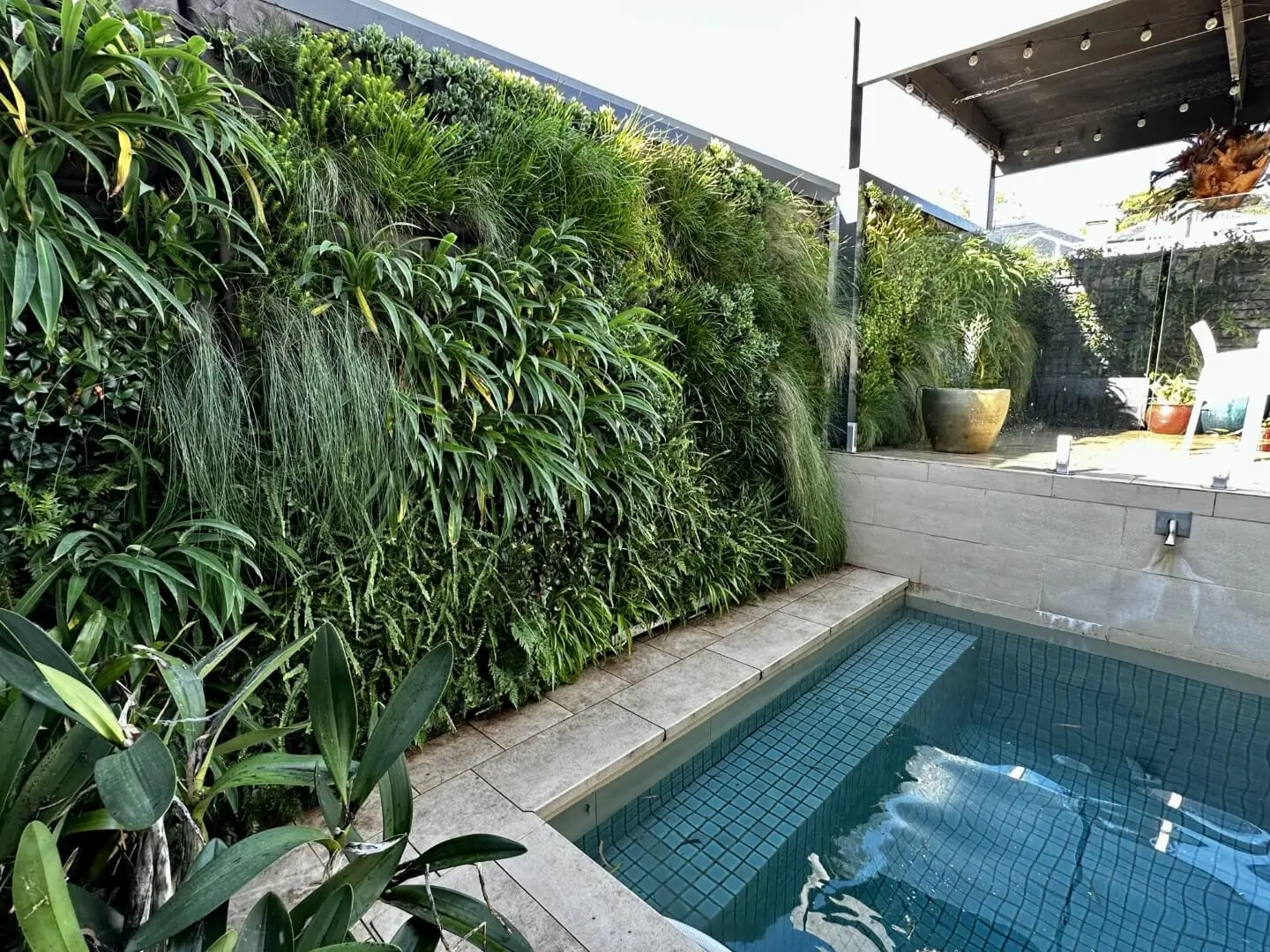Green Walls
Transform your space with a stunning green wall. Evergreen Infrastructure designs and installs beautiful living walls in Melbourne, bringing nature indoors or out.
.webp)





.webp)

.webp)
Bored with blank walls?
In urban spaces where pollution clouds the air and greenery is scarce, the question arises: how can we bring nature back into our concrete jungles?
The answer lies in green walls, breathing life into our cities, purifying the air, creating micro-climates, increasing biodiversity and reconnecting us with the natural world.
The Benefits
Improved Air Quality, Naturally
Green walls act as natural air filters, trapping pollutants and improving indoor air quality where it matters most.
Reduce Noise, Urban Heat, and Increase Biodiversity
Living walls provide insulation and reduce ambient noise, creating a more peaceful and comfortable environment.
Transform Spaces, Enhance Wellbeing
Green walls add a stunning element to any interior or exterior, boosting biophilic design and creating a calming, restorative atmosphere.
Projects
Features
Designing with purpose
We master all green wall types, applying each strategically to various sites. Our unbiased approach guarantees the perfect product match for your needs.
Smart Irrigation and Water Efficiency
Our green walls incorporate efficient irrigation technologies, conserve water, introduce aquaponics and keep plants thriving.
Plant Selection for Success
We meticulously curate plant varieties tailored for vertical habitats, carefully assessing light exposure and aligning with your aesthetic preferences.
Customised for Your Vision
From small accent walls to large-scale facades, we tailor green walls to fit your space, budget, and style.
Indoor and Outdoor Applications
Bring the beauty of a living wall inside or create a striking exterior feature that enhances any building.
Professional Installation and Maintenance
Our team handles everything, ensuring your green wall is installed flawlessly and maintained for long-term beauty.
FAQs
A green wall, also referred to as a living wall or vertical wall, is a structure that is covered with vegetation. It can be freestanding or attached to a wall, and plants are often grown in a medium such as an engineered growing media, hydroponics, or an engineered substrate.
Green walls offer numerous benefits, including improved air quality, reduced urban heat island effect, energy savings through insulation, enhanced aesthetics, noise reduction, and increased biodiversity. They also provide a natural environment that can positively impact mental well-being.
Plants in green walls absorb pollutants such as carbon dioxide and volatile organic compounds (VOCs), while releasing oxygen. They can filter dust and other particulate matter from the air, helping to create a cleaner and healthier environment.
Suitable plants for vertical green walls include a variety of ferns, climbing and trailing plants, succulents, and flowering plants. The choice depends on factors like light exposure, climate, and maintenance requirements. It is essential to select plants that thrive in the specific conditions of the wall's location.
Maintenance of vertical green walls includes regular watering, fertilising, pruning, and pest control. Many systems incorporate automated irrigation and nutrient delivery to reduce manual upkeep. It is important to monitor plant health and replace any that are not thriving. Some walls require machinery such as elevated work platforms (EWP'S) to reach walls that are high on buildings or hard to reach
Yes, vertical green walls can be installed indoors. Indoor green walls can improve air quality, reduce stress, and enhance the aesthetics of a space. When installing indoors, it is important to consider lighting, humidity, and temperature to ensure plant health.
The cost of vertical green walls varies widely depending on factors such as size, plant selection, design complexity, and installation method. Costs can range from a few hundred to several thousand dollars. Ongoing maintenance costs should also be considered along with a comprehensive maintenance plan carried out by professionally trained horticulturists.
Yes, vertical green walls typically require specialised irrigation systems to ensure even water distribution. These systems can be automated to provide consistent moisture and nutrients to the plants. Proper irrigation is crucial for the health and longevity of the green wall.
The structural requirements depend on the size and weight of the green wall. It is essential to ensure that the supporting structure can bear the load of the plants, soil, and water. Consulting with a structural engineer is recommended for large or complex installations and the the team at Evergreen infrastructure will always assist with this process.
Vertical green walls can improve energy efficiency by acting as natural insulation. They help regulate indoor temperatures by providing shade in the summer and reducing heat loss in the winter. This can lead to reduced energy consumption for heating and cooling.
Creating green oases in urban settings
Talk to us%20(1).webp)
.webp)
.webp)

.webp)
